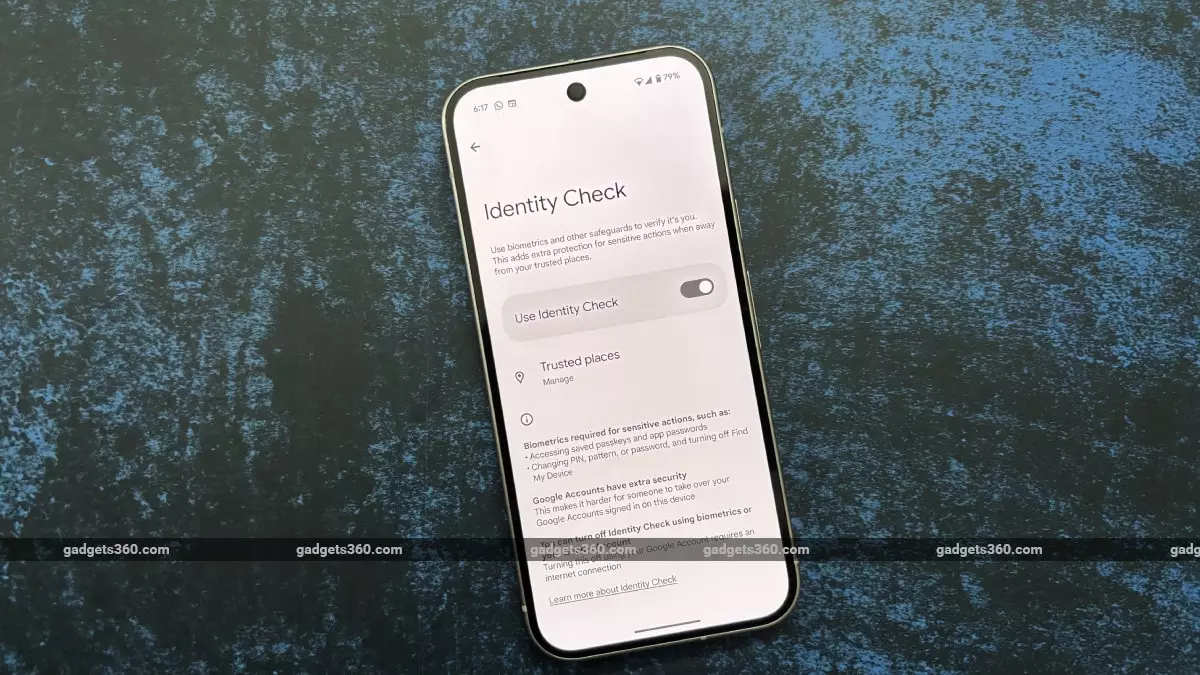In an increasingly digital world, the importance of robust security features for our devices cannot be overstated. Google’s latest endeavor to enhance user safety with its Identity Check feature exemplifies this trend. By innovating mobile security, Google is stepping up to protect users from the nightmares of data breaches and unauthorized access, particularly in the wake of rampant smartphone theft. This progressive move expands the functionalities of Android devices, including those from Samsung and Google Pixel, while indirectly challenging Apple’s authority in the domain of cybersecurity.
The Mechanism Behind Identity Check
The Identity Check feature acts as a formidable gatekeeper for sensitive user data. When enabled, it enforces biometric authentication for critical actions when a device is outside “trusted” locations. This means that accessing passwords, changing device PINs, or disabling “Find My Device” now demands a biometric confirmation—a remarkable security enhancement. While Apple introduced its version of this protective measure in the form of Stolen Device Protection with iOS 17.3, the fact that Android is following suit and expanding this functionality shows an acknowledgment of an urgent need in the mobile landscape.
The requirement for a Class 3 biometric authentication indicates that Google is not just introducing another half-baked feature; they are pushing the boundaries of what mobile security should look like. It ensures a higher degree of safety, thus making it exponentially harder for thieves to exploit stolen devices. In a time when data breaches have become distressingly commonplace, this feature could be a vital shield for countless users.
Beyond Basic Security: Protecting Google Accounts
The integration of Identity Check goes beyond safeguarding device settings—it extends into the realm of Google account protection. This comprehensive approach is crucial because many users depend heavily on their Google accounts for personal and professional purposes. The dual-layer approach of requiring biometrics even when one knows the owner’s password underscores a fundamental truth: Passwords alone are no longer sufficient in ensuring the sanctity of personal information.
Moreover, the necessity for biometric authentication to deactivate the Identity Check feature signifies a growing understanding of user habits. Too often, users may unwittingly relinquish control of their security settings under duress. The added layer of biometrics places substantial barriers against malicious actors, making unauthorized access to a user’s Google account an immensely complicated task. As users navigate these challenges, they can find solace in knowing that their digital identities are now better shielded.
What’s Next for Android Users?
The promise of the Identity Check feature rolling out to a broader range of Android devices marks a pivotal moment for Android owners. The anticipation surrounding the Android 16 update brings not just aesthetic changes but also a sense of security that has been long overdue. Users can expect a wide range of smartphones to support this feature, including upcoming models from OnePlus, LG, and of course, Samsung.
However, the true value of the Identity Check feature will hinge on its seamless integration across different devices. For users, this means adopting security practices that will require mental adjustments, as increasingly complex cyber threats demand an evolving dialogue around technology use.
Amid all this, Google’s initiative to fortify mobile security should serve as a clarion call for manufacturers, urging them to prioritize robust security features rather than mere aesthetic appeals. As the industry grapples with the balance between user experience and security, Google’s bold step forward might just set a precedent for others to follow.
In a world where our personal data is at risk, the proactive measures taken by tech giants like Google can create a ripple effect that emphasizes the necessity for better standards in mobile security. As the discussion on cybersecurity continues, it becomes critical for users to engage actively with the tools available to them, ensuring that they leverage innovative features like the Identity Check to protect their digital lives from unwanted intrusions.

